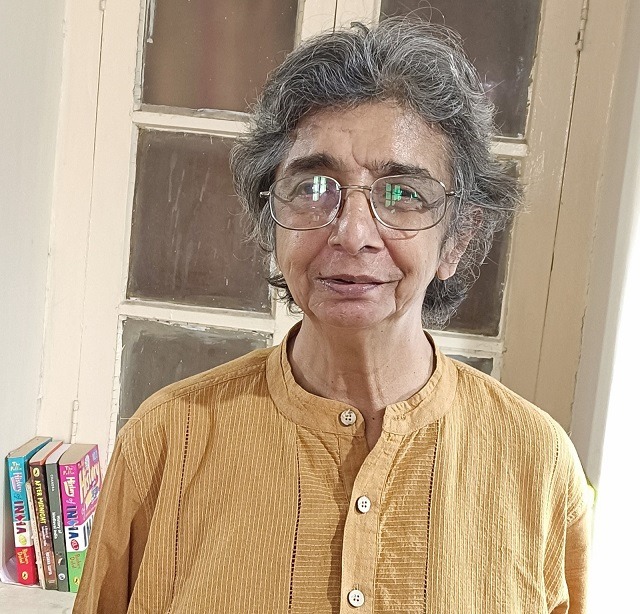
Aurangzeb was the sixth Mughal Emperor of India. His reign lasted for almost half a century (from 1658 to 1707) and was marked by several conquests and the vast expansion of the Mughal Empire. Aurangzeb’s full name was Muḥī al-Dīn Muhammad. He was the third son of the Fifth emperor of the Mughal dynasty, Shah Jahan. His mother was Mumtaz Mahal.
He was born in 1618, in Malwa, India. Aurangzeb is known for being the emperor of India from 1658 to 1707. He was the last of the great Mughal emperors. Under him the Mughal Empire reached its greatest extent, although his policies led to its dissolution. The empire reached its greatest extent under him, even though temporarily; during his lifetime the extent of Mughal Empire was more than 3.2 million square kilometers. Aurangzeb maintained the empire for nearly half a century and in fact extended it in the south as far as Tanjore (now Tanjavur) and Trichinopoly (now Tiruchchirappalli).
The third son of Emperor Shah Jahan, Aurangzeb was made viceroy of the Deccan when he was just 18 and he went on to aid his father in expanding the empire by undertaking several military campaigns. A very aggressive person, he desperately craved for power and had his father imprisoned when he fell ill. He defeated his own brothers to claim the throne for himself and crowned himself emperor of India, assuming the title Alamgir (Conqueror of the World).
He proved to be a very cruel and authoritarian ruler but also a highly capable warrior. Though he was able to quell the revolts, these rebellions and wars led to the exhaustion of the imperial Mughal treasury and army. His cruelty and discriminatory policies led the Marathas, Jats, Sikhs, and the Rajputs to rebel against him. Aurangzeb’s reign falls into two almost equal parts. In the first, which lasted until about 1680 he was occupied with safeguarding the northwest from Persians and Central Asian Turks and with the Maratha chief Shivaji, less so who twice plundered the great port 3 of Surat (1664, 1670). Shivaji was defeated, called to Agra for reconciliation (1666), and given an imperial rank. Shivaji fled to the Deccan and died, in 1680, as the ruler of an independent Maratha kingdom. Shivaji’s son Shambhaji was captured and executed in 1689 After about 1680, Aurangzeb’s reign underwent a change of both attitude and policy.
The first sign of change was the reimposition of the jizya, on non-Muslims in 1679 (a tax that had been abolished by Akbar). The Marathas, however, then adopted guerrilla tactics, spreading all over southern India amid a sympathetic population. The rest of Aurangzeb’s life was spent in laborious and fruitless sieges of forts in the Maratha hill country. The Deccan kingdoms of Bijapur and Golconda were conquered in 1686–87 Aurangzeb’s absence in the south prevented him from maintaining his former firm hold on the north In 1675 Aurangzeb arrested and executed the Sikh Guru (spiritual leader) Tegh Bahadur, who had refused to embrace Islam; the succeeding Guru, Gobind Singh, was in open rebellion for the rest of Aurangzeb’s reign.
Other 4 agrarian revolts, such as those of the Jats, were largely secular. Hindu idols, temples, and shrines were often destroyed. The Muslim confession of faith, for instance, was removed from all coins lest it be defiled by unbelievers, and courtiers were forbidden to salute in the Hindu fashion. The new Islamic policy alienated Hindu sentiment and undermined Rajput support. Aurangzeb ruled as a militant orthodox Sunni Muslim; he put through increasingly puritanical ordinances that were vigorously enforced by muḥtasibs, or censors of morals. Shahjahan fell seriously ill in 1657, the race for the succession of the throne began and Shah Jahan favoured his elder son Dara, but many advisors of the kingdom saw him as unworthy as he was too worldly.
Aurangzeb, a much more committed son than his elder brother was favoured by people. Tension rose between the two brothers for the succession of the Mughal empire and it seemed that war was inevitable While the war was going on between the two brothers Shahjahan recovered and was again on the throne but as Aurangzeb defeated his brother he confined his father in his own palace at Agra. Aurangzeb’s 5 orthodox religious behaviour and the imposition of religious policies towards the Hindu rulers seriously damaged the stability of the Mughal Empire. Aurangzeb was 88 years old when he died in central India on March 3, 1707. He died of natural causes, those being terminal illnesses that had gotten to him.
The writer has a Masters in Adult Education from Jamia Milia Islamia. She has many years teaching experience at the school level as also ten years of experience in book publishing and some published writing in newspapers and more students’ books. Lakshmi has retired and lives in Hyderabad.
Keekli’s Angels — Co-Authorship & Mentoring Programme for Budding Authors by Minakshi Chaudhry





